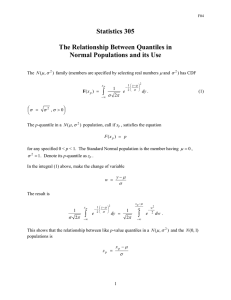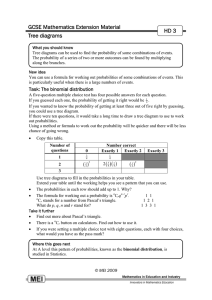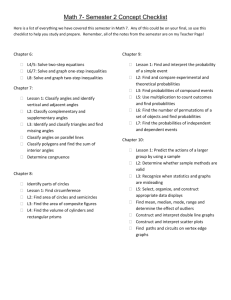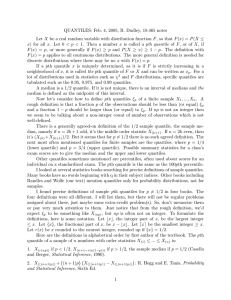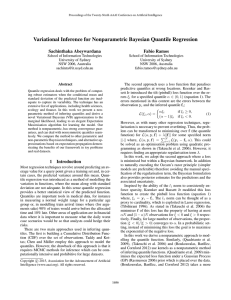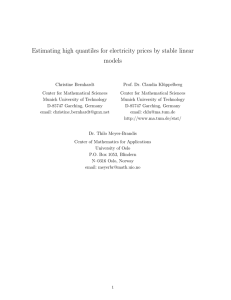µ σ
advertisement
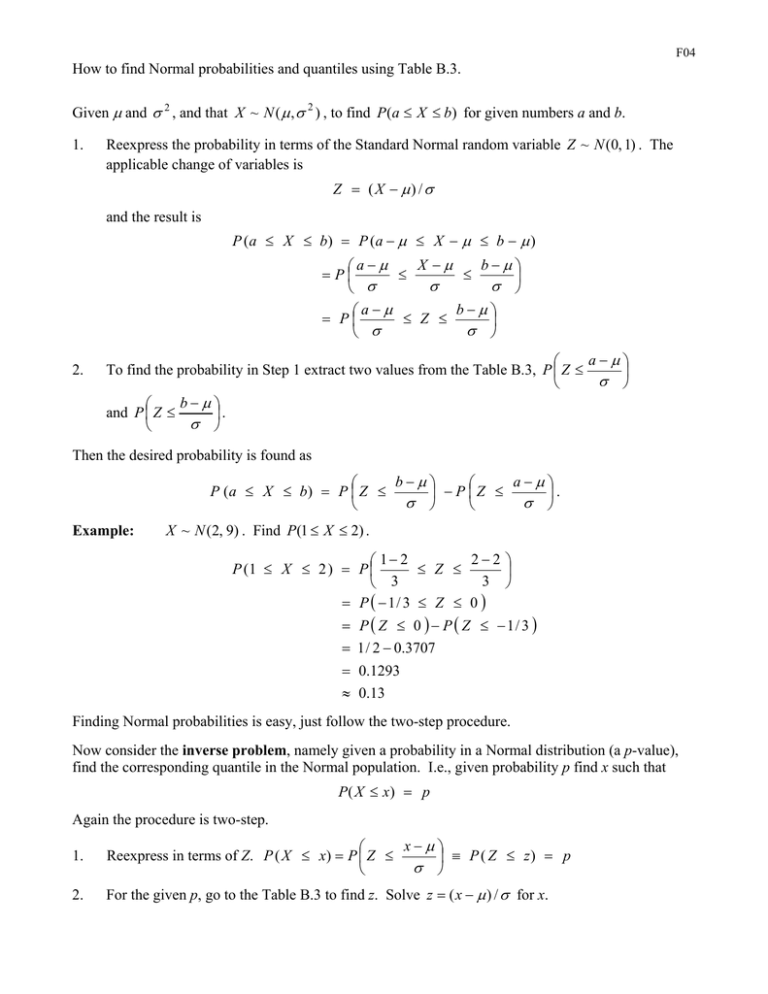
F04 How to find Normal probabilities and quantiles using Table B.3. Given µ and σ 2 , and that X ~ N ( µ , σ 2 ) , to find P (a ≤ X ≤ b) for given numbers a and b. 1. Reexpress the probability in terms of the Standard Normal random variable Z ~ N (0, 1) . The applicable change of variables is Z = ( X − µ) /σ and the result is P ( a ≤ X ≤ b) = P ( a − µ ≤ X − µ ≤ b − µ ) X −µ b−µ a−µ =P ≤ ≤ σ σ σ b−µ a−µ = P ≤ Z ≤ σ σ 2. a−µ To find the probability in Step 1 extract two values from the Table B.3, P Z ≤ σ b−µ and P Z ≤ . σ Then the desired probability is found as b−µ a−µ P ( a ≤ X ≤ b) = P Z ≤ − P Z ≤ . σ σ Example: X ~ N (2, 9) . Find P (1 ≤ X ≤ 2) . 2−2 1− 2 P (1 ≤ X ≤ 2 ) = P ≤ Z ≤ 3 3 = P ( − 1/ 3 ≤ Z ≤ 0 ) = P ( Z ≤ 0 ) − P ( Z ≤ − 1/ 3 ) = 1 / 2 − 0.3707 = 0.1293 ≈ 0.13 Finding Normal probabilities is easy, just follow the two-step procedure. Now consider the inverse problem, namely given a probability in a Normal distribution (a p-value), find the corresponding quantile in the Normal population. I.e., given probability p find x such that P ( X ≤ x) = p Again the procedure is two-step. 1. x−µ Reexpress in terms of Z. P ( X ≤ x) = P Z ≤ ≡ P ( Z ≤ z) = p σ 2. For the given p, go to the Table B.3 to find z. Solve z = ( x − µ ) / σ for x.



